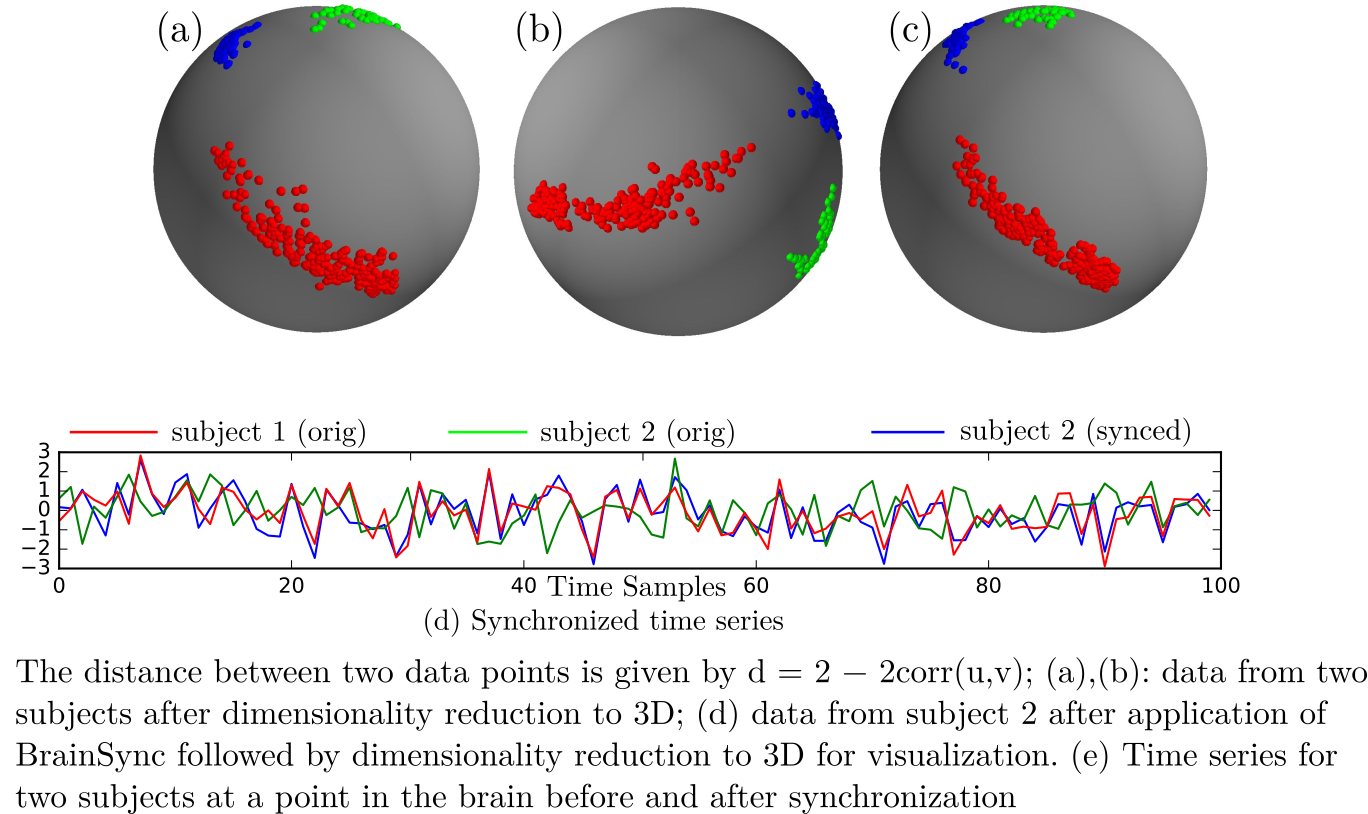|
Size: 2882
Comment:
|
Size: 3422
Comment:
|
| Deletions are marked like this. | Additions are marked like this. |
| Line 8: | Line 8: |
| Please refer to our publications for detailed explanation and examples. | Please refer to our publications below for detailed explanation and examples. |
| Line 10: | Line 10: |
| ==Software== | The following video shows the rfMRI signal in two scans and synchronized scan. . Subject Brain Reference Brain Synced Subject [[http://sipi.usc.edu/~ajoshi/brainsync_movie.gif|{{http://sipi.usc.edu/~ajoshi/brainsync_movie.gif|Click to enlarge|width="700"}}]] . '''Software''' |
| Line 17: | Line 27: |
| [[attachment:BrainSyncMatlab.zip|Download]] | '''[[http://neuroimage.usc.edu/neuro/Resources/BrainSync?action=AttachFile&do=get&target=BrainSyncMatlab_ver1.0.zip|Download]]''' |
| Line 19: | Line 29: |
| As an input we assume data matrices (Time x Vertices) of two scans, referred to as subject and target. First the data should be normalized to 0 mean and unit variance by running: | As an input we assume data matrices (Time x Vertices) of two scans, referred to as sub and ref. First the data should be normalized to 0 mean and unit variance by running: |
| Line 24: | Line 34: |
| subSynced = brainSync(ref, sub) % subSynced is the synched data for the subject | }}} and then the data can be synchronized using the following code. {{{ % subSynced is the synched data for the subject and % O is the associated orthogonal transform [subSynced, O] = brainSync(ref, sub) |
BrainSync
BrainSync is an orthogonal transformation that allows direct comparison of resting fMRI (rfMRI) time series across subjects. For this purpose, we exploit the geometry of the rfMRI signal space to conjecture the existence of anorthogonal transformation that synchronizes fMRI time series across ses-sions and subjects. The method is based on the observation that rfMRIdata exhibit similar connectivity patterns across subjects, as reflected inthe pairwise correlations between different brain regions. The orthogonal transformation that performs the synchronization is unique, invertible, efficient to compute, and preserves the connectivity structure of theoriginal data for all subjects. Similarly to image registration, where wespatially align the anatomical brain images, this synchronization of brain signals across a population or within subject across sessions facilitates longitudinal and cross-sectional studies of rfMRI data.
The BrainSync concept is illustrated below:
Please refer to our publications below for detailed explanation and examples.
The following video shows the rfMRI signal in two scans and synchronized scan.
- Subject Brain Reference Brain Synced Subject
Software
The input is assumed to be two time x vertices datasets, one is denoted as subject and second as target. It is highly recommened that the input is normalized to have unit varaince. If not, BrainSync will throw a warning and do the normalization internally. Before returning the outputs, the means for each time series will be added back and varaince rescaled back to its original value. However, we recommend doing the normalization using the function normalize_data.m.
Matlab
The matlab source code for BrainSync can be downloaded below.
As an input we assume data matrices (Time x Vertices) of two scans, referred to as sub and ref. First the data should be normalized to 0 mean and unit variance by running:
sub = normalizeData(sub) % Do the data normalization for subject brain ref = normalizeData(ref) % Do the data normalization for the reference brain
and then the data can be synchronized using the following code.
% subSynced is the synched data for the subject and % O is the associated orthogonal transform [subSynced, O] = brainSync(ref, sub)
Python
The matlab source code for BrainSync can be downloaded here.
Download [TBD]


